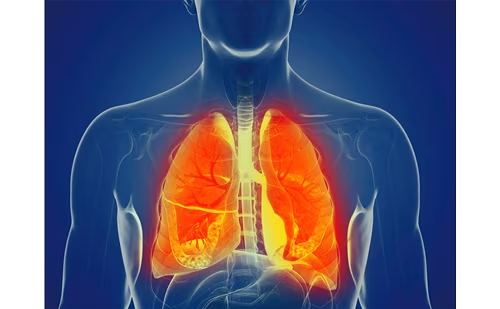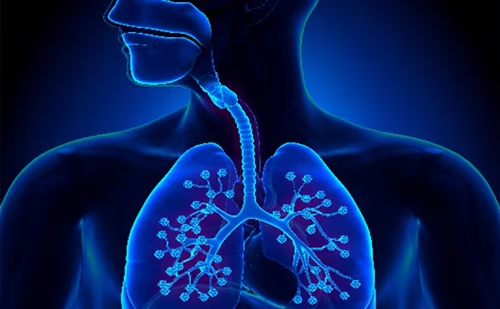Obstructive sleep apnoea (OSA) is a widespread disorder that affects millions of individuals worldwide.1 It is characterized by repeated episodes of upper airway obstruction during sleep; these episodes can have several negative consequences, including daytime sleepiness, impaired quality of life and an increased risk of developing other health problems, such as hypertension, heart disease and stroke.2 To effectively diagnose and treat OSA, it is essential to have a clear understanding of an individual’s sleep phenotype, that is, the specific characteristics associated with an individual’s sleep disordered breathing.
One of the most important aspects of sleep phenotyping in OSA is measuring the severity of the disorder. Disorder severity can be measured by assessing the apnoea–hypopnea index (AHI), which indicates the number of apnoeas and hypopneas (i.e. partial airway closures) that occur per hour of sleep. The AHI is typically used as a cutoff for the diagnosis of OSA, with values of five or higher indicating the presence of the disorder.3 However, recent studies have questioned the reliability of AHI as the sole indicator of sleep apnoea severity and pointed to other factors that may have an important role in determining the disorder’s impact on health.4
One of the main criticisms of the AHI is that it does not consider the duration of each apnoea or hypopnea event.5 Studies have shown that apnoeas and hypopneas lasting longer than 20 seconds lead to greater physiological disturbances, such as oxygen desaturations and increased blood pressure, compared with shorter events.6 This has led to the proposal of the apnoea-hypopnea duration index, which accounts for the duration of the events in addition to their frequency.6
Another limitation of the AHI is that it does not consider the patient’s response to the events in terms of sleep disruption and related symptoms. This response can vary between patients and makes it difficult to generalize treatment. For example, some individuals may experience significant daytime sleepiness or other symptoms at an AHI of 15 events/hour, whilst others with the same level of sleep-disordered breathing may not experience any symptoms.7
In addition, the AHI does not consider the location of the airway obstruction, which may affect the severity of the disorder. For example, an obstruction that occurs at the base of the tongue level may be more clinically significant than one that occurs at the level of the soft palate.8
Finally, the AHI has low ability to predict cardiovascular adverse events, whilst hypoxic burden parameters during polysomnography have been found to be independent predictors of OSA complications.9
Consequently, recent studies have suggested that a more comprehensive measure of sleep apnoea severity, which considers not only the frequency and duration of apnoeas and hypopneas but also other factors, such as the patient’s individual response and the location of the airway obstruction, is needed.10
Another important aspect of sleep phenotyping in OSA is determining the specific factors that contribute to sleep-disordered breathing. This may include assessing upper airway structure and function, breathing patterns during sleep and the presence of other factors such as obesity, snoring and positional sleep apnoea. Furthermore, it is crucial to evaluate the patient for other sleep disorders, such as insomnia or restless leg syndrome, which may coexist with OSA or mimic its symptoms, as these conditions may require different treatment approaches.11
Overall, sleep phenotyping in OSA is a complex and multifaceted process that requires a thorough assessment of an individual’s sleep characteristics. By gaining a deeper understanding of the specific factors that contribute to an individual’s OSA, healthcare providers can tailor the treatment approach to the patient‘s needs more effectively.
One of the first attempts using this approach was made by Randerath et al. with the Baveno classification of OSA.12 Using the large cohort of patients with OSA enrolled in the European Sleep Apnea Database registry, the authors classified patients with OSA (AHI ≥5 events/hour) based on the presence and severity of symptoms and comorbidities. Interestingly, they found that, whilst all patients showed an improvement in excessive daytime sleepiness with continuous positive airway pressure treatment, only those with either comorbidities or severe symptoms had a significant reduction in blood pressure at follow-up.
Therefore, how should we address the problem of phenotyping OSA? Cluster analysis is a statistical technique that can be used to identify subgroups, or clusters, of individuals within a large dataset based on the similarity between certain characteristics or variables. In the context of sleep apnoea phenotyping, cluster analysis can be used to identify subgroups of individuals who have similar patterns of sleep-disordered breathing and related symptoms despite having different levels of severity of OSA as measured by the AHI.13
One of the main advantages of using cluster analysis for sleep apnoea phenotyping is that it can help to identify patterns and relationships among a large and complex set of variables, which may be difficult to discern using traditional statistical methods. For example, by using cluster analysis, researchers can identify subgroups of individuals with sleep apnoea who share similar characteristics such as body mass index, snoring and positional sleep apnoea, to help guide treatment and management decisions.
Cluster analysis can also be used to identify unique subgroups of patients with sleep apnoea who have different characteristics, such as age, gender or comorbidities, that may be related to disorder severity or treatment response. By identifying these subgroups, it is possible to develop more targeted, personalized treatment plans that are better suited to the needs of patients.14
To conclude, OSA is a heterogeneous condition, which varies between patients. Thus, we must understand such heterogeneity to tailor treatment and improve outcomes in all dimensions. Cluster analysis can be a valuable tool for sleep apnoea phenotyping by providing a more comprehensive and nuanced understanding of the characteristics that underlie the disorder. Identifying subgroups of individuals with similar patterns of sleep-disordered breathing can help healthcare providers to better tailor treatment and management decisions to the specific needs of each patient.







